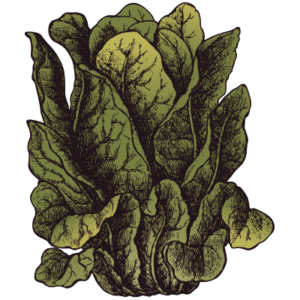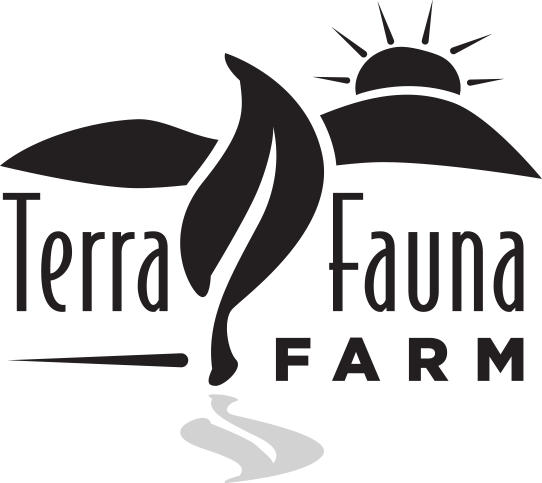Leaf Vegetables
ARUGULA
DESCRIPTION:
Also known as “salad rocket”, this green is popular in – yes, you guessed it: salads! It is high in vitamins A, C and K, as well as potassium. Larger leaves are more peppery than smaller ones, the latter being sweeter and softer.
STORAGE:
Keep arugula stored in its bag in the most humid part of your refrigerator (usually the veggie storage bins/area) . Wash right before use.
BEST USED:
In salads, pastas, and on pizzas.
ACCOMPANYING FLAVORS:
Olive oil, tomatoes, mushrooms, earthy cheeses.
RECIPES:
Try making an arugula pesto here!
CABBAGE
DESCRIPTION (Capture):
Heads are large, about 4-6 lbs. This green variety is very flavorful and is often used in slaw and for processing. Cabbage is high in Vitamin C and antioxidants, and has historically been used in medicine.
DESCRIPTION (Melissa [savoy]):
Heads are about 2-4 lbs. This variety is popular for its flavor and is described as “robust.” As stated above, it is high in Vitamin C and antioxidants.
STORAGE:
Store in vegetable crisper area of your refrigerator. Additionally, keeping it in an air-tight storage container or wrapping it in plastic wrap will keep it fresher longer.
BEST USED:
Raw, steamed, pickled, roasted, in slaws and salads.
ACCOMPANYING FLAVORS:
Mayonnaise, vinaigrette, apple, ginger citrus.
RECIPES:
Try this popular coleslaw recipe! The capture variety works perfectly.
Savoy cabbage is best for this Chinese dish.
 LETTUCE
LETTUCE
DESCRIPTION (De Morges Braun):
A romaine lettuce, this variety is green in the center with a pinkish/bronze outside. Leaves are tender and sweet. Lettuce, in general, is a good source of Vitamin A and potassium.
DESCRIPTION (Merlot):
This is a dark reddish-purple lettuce with frilly and crisp leaves and a “delicate” taste. The dark color reflects its high level of anthocyanin, which is a great antioxidant.
DESCRIPTION (Oakleaf):
This lettuce is recognized by its distinct lobed appearance (shockingly enough, similar to that of an oakleaf). It is a butter lettuce: tender, nutty, and sweet. Oakleaf has six times the amount of Vitamin A and three times the amount of Vitamin C than iceberg lettuce.
DESCRIPTION (Freedom Mix):
This mix is renowned for its great taste. As stated above, lettuce is rich in vitamin A and potassium.
STORAGE:
Do not wash until use. Store loosely in a plastic bag in the vegetable crisper section in the refrigerator. Lettuce will keep for approximately 2-3 days once picked.
BEST USED:
As salads, on sandwiches, in wraps.
ACCOMPANYING FLAVORS:
Dressings, fruits, nuts, cheeses. Lettuce is very versatile!
RECIPES:
A tasty salad guaranteed to be a crowd pleaser.
SPINACH
DESCRIPTION (Space):
This variety is smooth, slightly savoyed, and dark green. Spinach is particularly high in Vitamins K, A, C, manganese, calcium and folate.
STORAGE:
Refrigerate in a plastic bag. Do not wash until use! Fresh spinach will keep about 3-5 days. It may also be frozen after being blanched.
BEST USED:
Raw, sauteed, boiled, steamed.
ACCOMPANYING FLAVORS:
Garlic, lemon, salt, peppers, vinegar, nutmeg.
RECIPES:
Give your favorite restaurant a run for its money! Make your own spinach and artichoke dip.
BRUSSELS SPROUTS
DESCRIPTION (Hestia):
Brussels sprouts are part of the cabbage family. They are high in vitamins C and K and contain B vitamins. Hestia is an award winning variety!
STORAGE:
This vegetable has a relatively long refrigerator life (at least a week) once picked. Freezing also works well if you cannot use them quickly!
BEST USED:
Boiled, steamed, roasted, raw (shaved thin on salads), fried. Overcooking will result in a bitter taste! To ensure even cooking, use similar sized buds. When boiling or steaming, cut an “X” in the stem to make sure the thicker parts get cooked. Remove discolored leaves before cooking.
ACCOMPANYING FLAVORS:
Nuts, butter, Parmesan cheese, pepper, bacon, balsamic vinegar.
RECIPES:
Mmmmmmmm. Roasted Brussels sprouts with balsamic vinegar & honey.
COLLARDS
DESCRIPTION:
Collard greens are in the same family as cabbage, kale and broccoli. They are high in Vitamin C and fiber, and are believed to lower cholesterol. The Vates variety has a mild flavor and leaves are dark green.
STORAGE:
Refrigerate in a plastic bag. Greens in a refrigerator should last about 10 days. Wash before use. Freezing is another viable method!
BEST USED:
Steamed, sauteed in oil, simmer in veggie stock, chicken stock, or bacon fat.
ACCOMPANYING FLAVORS:
Smoky meats (bacon, ham, etc.), salt, pepper, onion, butter, garlic.
RECIPES:
Y’all are gonna love this Southern style collard greens recipe!
KALE
DESCRIPTION (Red Russian):
This large variety of kale has grey-green leaves. It is a flat variety, tender and delicious! Kale is high in Vitamins K and C, beta carotene, antioxidants, and calcium. It also contains sulforaphane when raw, which is linked to anti-cancer properties. DESCRIPTION (Blue Ridge):
This is a curly variety with dark blue-green leaves. It is popularly steamed, baked into chips, or used in stir-fries. As stated above, kale has many nutritious properties.
DESCRIPTION (Lacinato):
Also known as “dinosaur kale”, this variety is flat with dark blue-green leaves. It is described as earthy and delicate, making it popular in kitchens. See above for nutritional perks!
STORAGE:
Keep kale in an airtight bag in the refrigerator. Do not wash before use! Kale can keep up to five days. It can also be frozen, and will be sweeter upon doing so!
BEST USED:
Raw, made into chips, in soups, steamed, sauteed.
ACCOMPANYING FLAVORS:
Lemon juice, nuts, sesame, beans, tomatoes.
RECIPES:
Don’t settle for soggy kale chips! Try this recipe. Curly (blue ridge) works best!
Superfoods unite in this all-star recipe.
SWISS CHARD
DESCRIPTION (Bright Lights):
Taste the rainbow with this veggie! Stalks are vibrant red, yellow, orange, gold, or white. Leaves are green to burgundy with a mild flavor. Chard is renowned for being an excellent food for health, and is a good source of Vitamins A, C and K and betalains.
STORAGE:
Refrigerate in an airtight plastic bag. Chard should keep for about five days. Wash right before use!
BEST USED:
Stalks are rarely eaten. Leaves are often boiled, eaten raw, or sauteed!
ACCOMPANYING FLAVORS:
Olive oil, lemon juice, garlic.
RECIPES:
Ooh la la! Try this crustless Swiss chard quiche.
